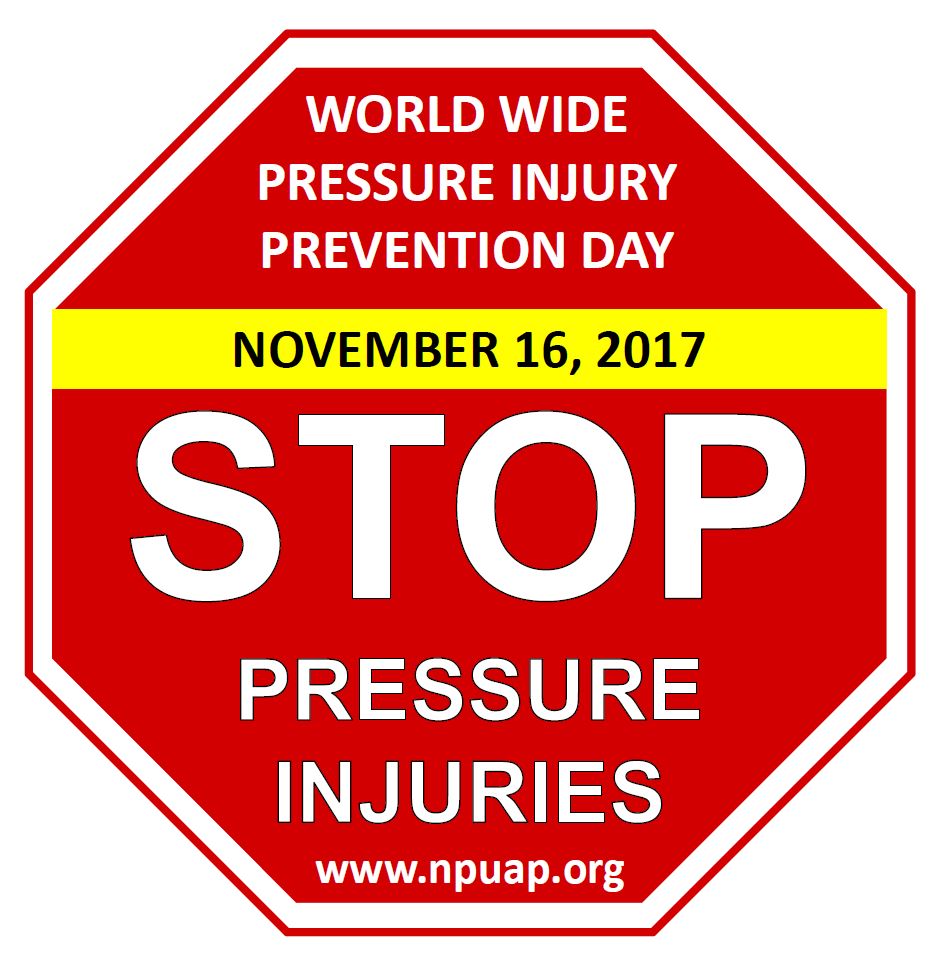
On November 16th, 2017, the National Pressure Ulcer Advisory Panel (NPUAP) created an initiative to bring awareness to our communities by
announcing a “celebration” of World Wide Pressure Injury Prevention Day.
Celebration may not be the best word to describe this day; however, a
simple increase in attention and renewed sense of urgency to lessen the
chance of injury will be a move in the right direction. The logo created
this year was a stop sign in hopes of bringing attention to this
significant issue that is sorely in need of further education and
awareness.
The following are some staggering figures regarding the state of pressure ulcer related injuries:
- 2.5 million individuals in the US suffer with pressure injuries annually
- Average US comprehensive cost of $9.1 billion to $11.6 billion per year for treatment
- General average for Stage 3 pressure wound treatment can cost $5,900 to $14,840 (or more)
- General average for Stage 4 pressure wound treatment can cost $18,730 and $21,410 (or more)
- Hospital reimbursement is discontinued or denied for any charges
related to hospital-acquired conditions, this included pressure injuries
as one of the conditions.
- Additional charges due to a pressure wound can be up to $700,000 if patient is hospitalized
- Lawsuits regarding pressure wounds are increasing and can average up to $250,000
It is estimated that up to 60,000 Americans die annually as a direct result of pressure wound related complications.
Day-to-day management of their wound can also take a significant toll
in many aspects of the patient’s emotional and mental quality of life
which further impacts their wound healing. Sadly, the patients chronic
wound and management of that wound can also take a toll on family and
friends around them as they support and care for the patient. Many
people may have encountered people throughout their life who have
suffered with this unfortunate disease. As a wound care nurse, I see all
these facts and figures listed above on a first-hand basis. I generally
see patients after the wound has occurred or skin damage has happened.
In a review of 76,435 pressure wound patients, the most common area for
pressure wounds was the patient’s coccygeal region (47%), 17% were
located on the buttock, 14% on the heel, and 13% were located on other
bony prominences. When assessing patients, I begin not only with a wound
assessment, but a much more detailed assessment, including nutrition,
turning and positioning, moisture, friction and sheering, and
comorbidities. Lastly, we factor in any other non-wound related patient
specific information we need to review.
Each patient is different and requires individualized treatment modalities to meet their specific needs.
The attention to each patients’ wound is crucial and can be very time
consuming. That is why the World Wide Pressure Injury Prevention Day
was so refreshing. I spent my time at a level 1 trauma center where the
wound care nurses and a team of chosen representatives and
administration conducted a prevalence study on every patient in the
hospital. They looked at every bony prominence, assessed every patient’s
skin, and took their time to also review prevention, treatment, and
make assessments of each patient admitted to their hospital. These staff
members are such a great testament in making a commitment to pursue
better patient outcomes. It was inspiring to see this commitment and I
hope that sharing this experience can be my small part of spreading the
importance of World Wide Pressure Injury Prevention Day.

Theresa Alvarez, RN, BSN, CWOCN
Theresa is the global wound care clinical specialist for DeRoyal.
Her primary roles are to provide evidence and knowledge based support
for the DeRoyal advanced wound care, burn care, and negative pressure
wound therapy product lines. She is a clinical support for our sales
teams and customers with assisting with product training, trials,
implementations, and general assistance when requested.